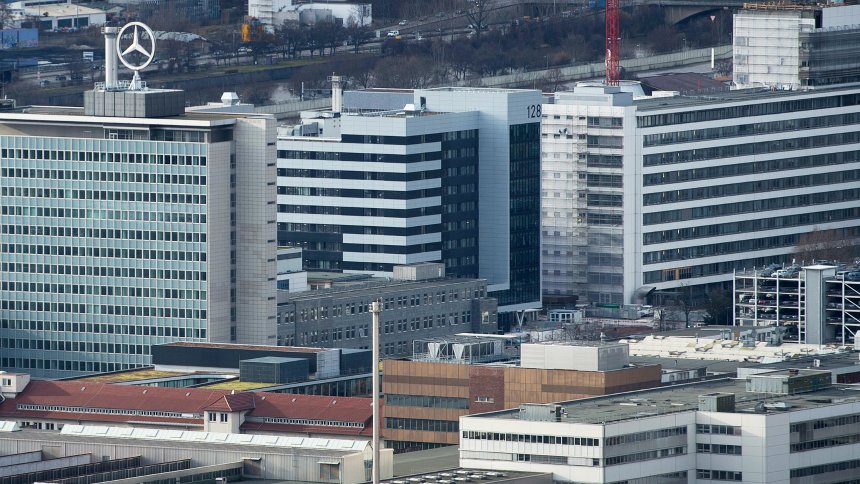The Daimler Board of Management has decided to take the first steps in a major redesign plan: In the future, the car company will consist of three independent divisions. The Stuttgart hopes that more clout against new rivals such as Tesla or Apple.
Daimler headquarters in Stuttgart
Monday, 16.10.2017
15:27 clock
Daimler CEO Dieter Zetsche has great respect for Tesla. The young competitor from California, Zetsche said a few months ago, the electromobility from the “cereal image” freed. That, according to the Daimler boss, “is the right way”.
Daimler also wants to break new ground in the future, and the carmaker has now created the conditions for this. With his decision on Monday, the Daimler Board of Management gives its boss Zetsche backing for a large-scale conversion. In future, the Stuttgart-based group will no longer form a single conglomerate, but will consist of three legally independent divisions:
Passenger car unit around the core brand Mercedes-Benz
Trucks division
Service sector
According to Zetsch’s master plan, these units will in future only be connected via a common parent company: Daimler AG.
It would be Daimler’s biggest organizational reorganization since the separation of the US Chrysler brand in 2007. “If you want to be consistently competitive and sustainably profitable,” Zetsche says, “you need to continually evolve and adapt to rapidly changing environments. ”
In an internal presentation held at the end of September in front of employees, it was said: “We have to move”. The lecture sounded like a warning: new, aggressive competitors were pushing into the market, including the US car maker Tesla, the Chinese taxi service Didi or the IT company Apple, which has been researching self-driving cars for years,
To be able to compete against such competitors in the future, Daimler needs two things above all else. First, strong cooperation partners, even from seemingly non-industry sectors such as the IT world. Second, a lot of money.
The new structure should give Daimler more flexibility. It would be conceivable, for example, sub-stock exchanges. In this way, Daimler could collect fresh billions. After all, high investments in future-oriented businesses such as electric cars or mobility services are planned for the coming years. In the next seven years alone, Daimler wants to spend 35 billion euros on this.
In addition, it is hoped that it will be easier to find cooperation partners for smaller, specialized subcontractors. The idea behind this is that a California software company, for example, would prefer to work only with Daimler’s service division rather than a whole conglomerate that includes factories for trucks and buses. There are also legal aspects: Strategic alliances, such as joint ventures, are easier to design with smaller subcontractors.
The current decision of the Board of Management was preceded by months of negotiations. In it, Zetsche apparently managed to convince the employees of the mega-project. Trade unionists and works councils had demanded in advance that the holding company should keep its headquarters in Germany. In addition, the workers called for securing the future by 2029, ie a waiver of redundancies. Now the Group and the works council have agreed on a corresponding key issues paper.
Nothing is definitely decided yet, emphasizes Daimler. The concrete details of the so-called divisional structure are still being negotiated. First, the car maker wants to invest a three-digit million amount in initial measures. The official starting signal for the conversion will then be the Daimler Annual General Meeting in the spring of 2019.
The approval of the shareholders, however, should be purely a matter of form. Investors and analysts have been criticizing for some time that German automakers are too big, too complex and too slow. “It’s time to streamline these mammoth corporations,” says Arndt Ellinghorst of the Evercore ISI analysis house, “and split it up into smaller, more efficient units.”

